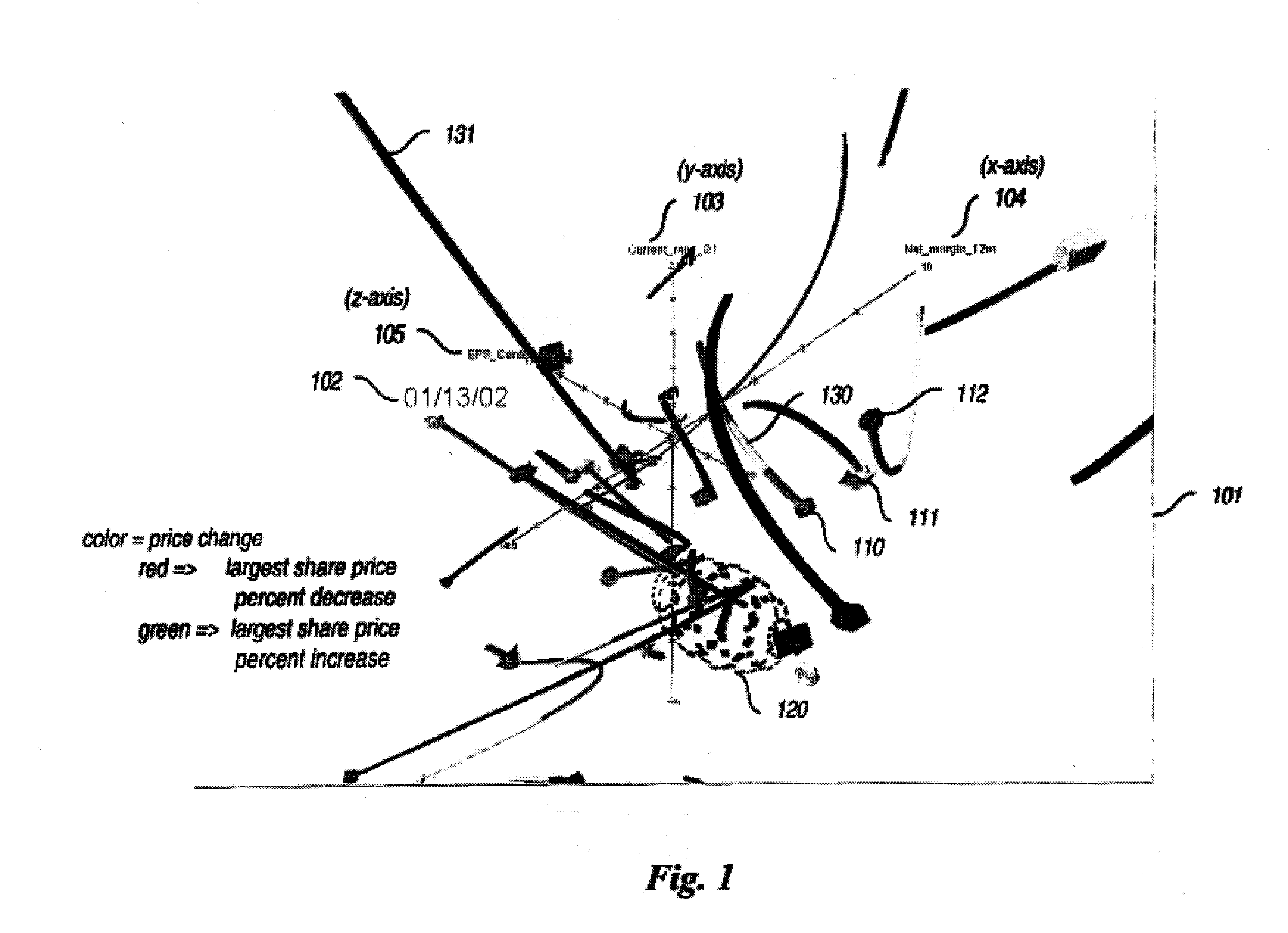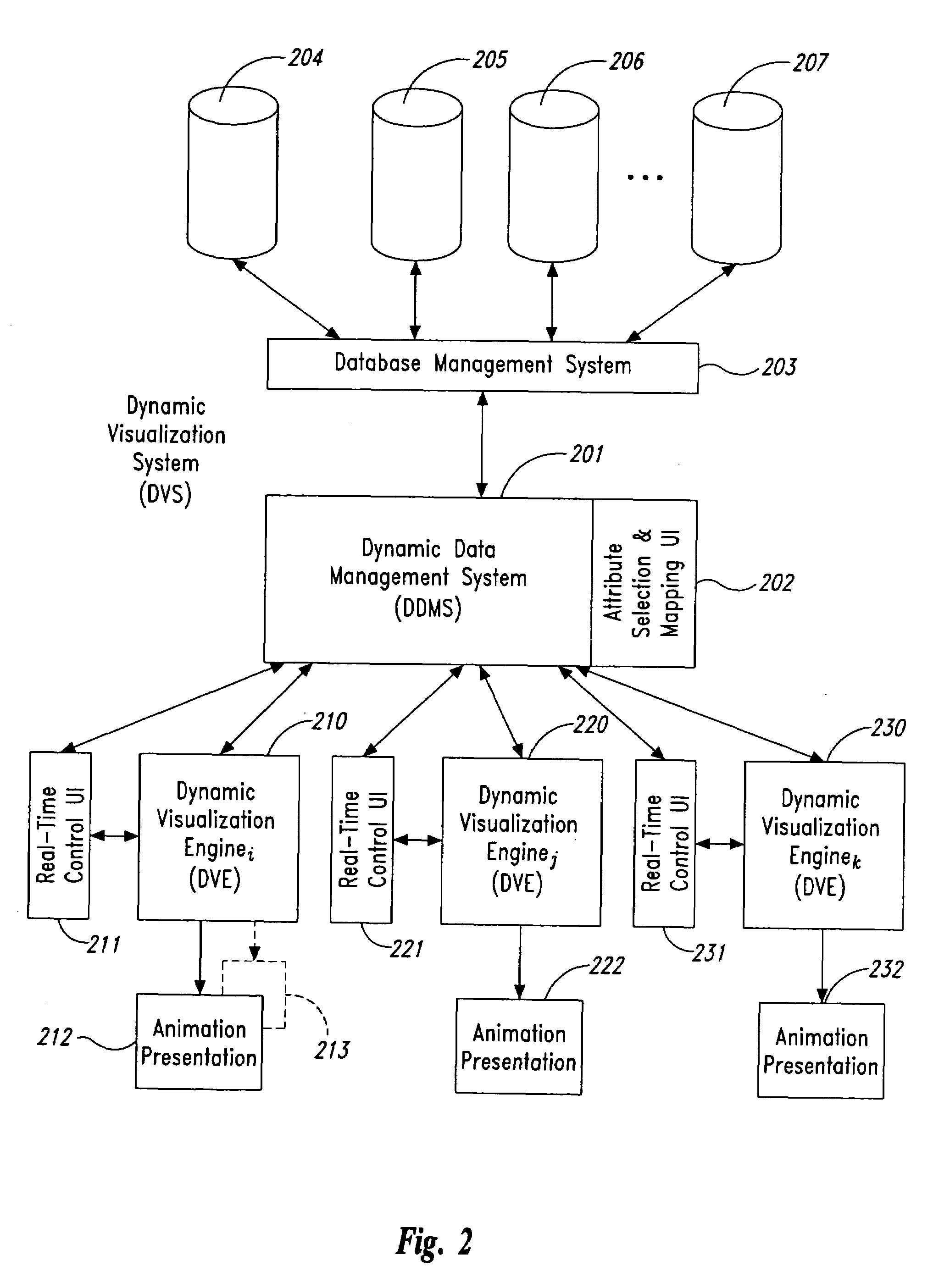Method and system for dynamic visualization of multi-dimensional data
a multi-dimensional data and dynamic visualization technology, applied in the field of methods and systems for the display of multi-dimensional data, can solve the problems of large-scale complex data, inability to comprehend the data so acquired, and inability to predict the effect of errors
- Summary
- Abstract
- Description
- Claims
- Application Information
AI Technical Summary
Benefits of technology
Problems solved by technology
Method used
Image
Examples
Embodiment Construction
[0049]Embodiments of the present invention provide computer- and network-based methods and systems for dynamically determining and presenting appearance and spatial attribute values of subsets of multi-dimensional data over an index (a sequence) to assist in the recognition of patterns and trends within the data. Example embodiments provide a Dynamic Visualization System for the presentation of multi-dimensional data (a “DVS”), which enables users to identify patterns and trends in highly dimensional data, without being forced to reduce the information being presented by using data transformations. This allows users whose experience with the data is not sufficiently sophisticated for mentally modeling the data through such data transformations to instead identify trends by observing dynamically determined data values that are portrayed, for example, animated, over some sequence such as time. The dynamically determined data values are imputed in near real-time using functions that ar...
PUM
 Login to View More
Login to View More Abstract
Description
Claims
Application Information
 Login to View More
Login to View More - R&D
- Intellectual Property
- Life Sciences
- Materials
- Tech Scout
- Unparalleled Data Quality
- Higher Quality Content
- 60% Fewer Hallucinations
Browse by: Latest US Patents, China's latest patents, Technical Efficacy Thesaurus, Application Domain, Technology Topic, Popular Technical Reports.
© 2025 PatSnap. All rights reserved.Legal|Privacy policy|Modern Slavery Act Transparency Statement|Sitemap|About US| Contact US: help@patsnap.com



